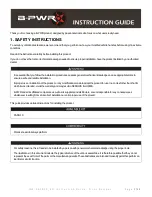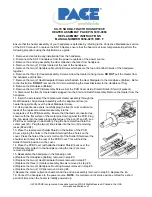66
tinb60e1 (2020-07)
8.4
Contamination
The most common cause of all vacuum gauge failures is conta-
mination of the sensor. Noisy or erratic readings, the inability to
set zero or atmosphere and total gauge failure, are all possible
indications of gauge contamination.
Contamination can be generally characterized as either:
A) a reaction of process gases with sensor elements, or
B) an accumulation of material on the sensor elements. Sen-
sors that fail due to chemical reaction are generally not
salvageable. Sensors that fail due to condensation, coatings,
or particles may possibly be restored by cleaning.
A) Reactive Gases
If process gases react with the materials of construction of the
sensor, the result is corrosion and disintegration of the sensor
over time. The chemistry of the gases used for plasma etching
and other reactive semiconductor processes are examples
where this failure mode is possible. In this case, cleaning can’t
solve the problem because the sensor has been destroyed. The
sensor or module must be replaced.
If you experience this failure mode quickly or frequently, you
should consider a different vacuum gauge for your application.
Thermal vacuum gauges may be available with different sensor
materials that are not as reactive with your particular process
gases. The standard gold plated tungsten sensor used in the
INFICON convection gauge is offered for use with air and inert
gases such as N
2
, argon, etc. INFICON also offers platinum sen-
sors for applications not compatible with gold plated tungsten.
There is no material that is universally chemical resistant; your
choice of vacuum gauge (as well as all other vacuum compo-
nents) should take into consideration the potential reactions
between your process gases and the materials of construction.
Consider what effect water vapor will have when combined with
your process gases because a finite amount of water will enter
the chamber during venting to atmosphere with air.
Summary of Contents for 3PE5-001-B7HZ
Page 79: ...tinb60e1 2020 07 79 Notes...


















